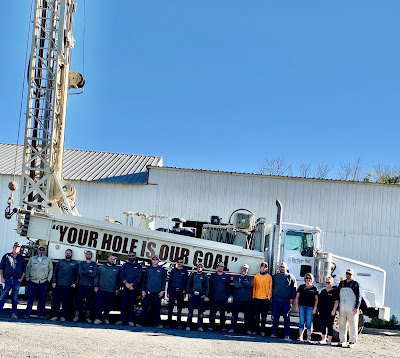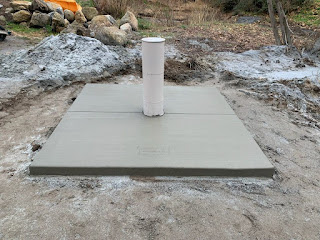What happens if my well collapses while drilling?
We have previously discussed the variety of underground formations found in Southern California and this adds to the unpredictability of well collapse during drilling. A well collapsing while drilling can be attributed to the formation of the property in which work is being completed or it can be attributed to a driller’s lack of preparedness. Let’s talk about being prepared first. At Heritage Well we have a step-by-step process in our drilling practices that we previously discussed in another article HERE. In a planned hard-rock air-rotary hole our team ensures that we have casing on site, ready to be installed. Having casing readily available allows our team to quickly install it in the hole and often times will save a hole from collapsing.
If the hole does collapse and our team is unable to complete it before it does there are several options for completion available to you. The first and most common option is called a “mud clean-out.” Most drilling contracts in Southern California have a clause included that provides pricing and an explanation of what is needed to clean-out a hole using the mud-rotary process. This pricing typically will include another equipment move-in fee, additional labor, fuel and bit charges to bring in the equipment, make and provide a mud-slurry, ream out the hole to a 7 ⅞” - 8” diameter and install a gravel-pack. Pricing is either provided in a lump-sum format or by the foot. In areas where there is sluff or loose material mixed in with the hard, granite formation using a mud clean-out option is very effective. This process is similar to a mud-rotary hole installation and typically takes an additional 1-3 days to complete. The benefit of this process is that usually the driller is successful in getting the hole back to the original depth completed in the air-rotary process and there is no loss of water in the completion of the hole.
Another way wells that collapse are completed are with steel being drilled and driven to a harder formation. This type of drilling is uncommon in Southern California and much more common in other parts of the country. This process involves installing a drive shoe on the bottom of the steel casing to be installed and pounding that casing into the ground until it finds a firm, granite like formation to adhere to. Installing steel casing in this manner can be used for footages less than 100 ft or significantly more. It is formation dependent and different in every situation, your driller should be able to guide you properly when recommending this option. One down-side of this process is that it is costly, and controlled by high steel prices and the driller’s significant investment in additional tooling to complete this process. The other down-side of installation in this manner is that if there was any surface water in the unstable or soft formation it will be sealed off from the well. This can be problematic if there is not enough water in the formation below where the steel casing is completed to.
As you might imagine already, well drilling can be quite unpredictable, at least here in Southern California as we have varying topography and underground formations formed millions of years ago.



Comments
Post a Comment